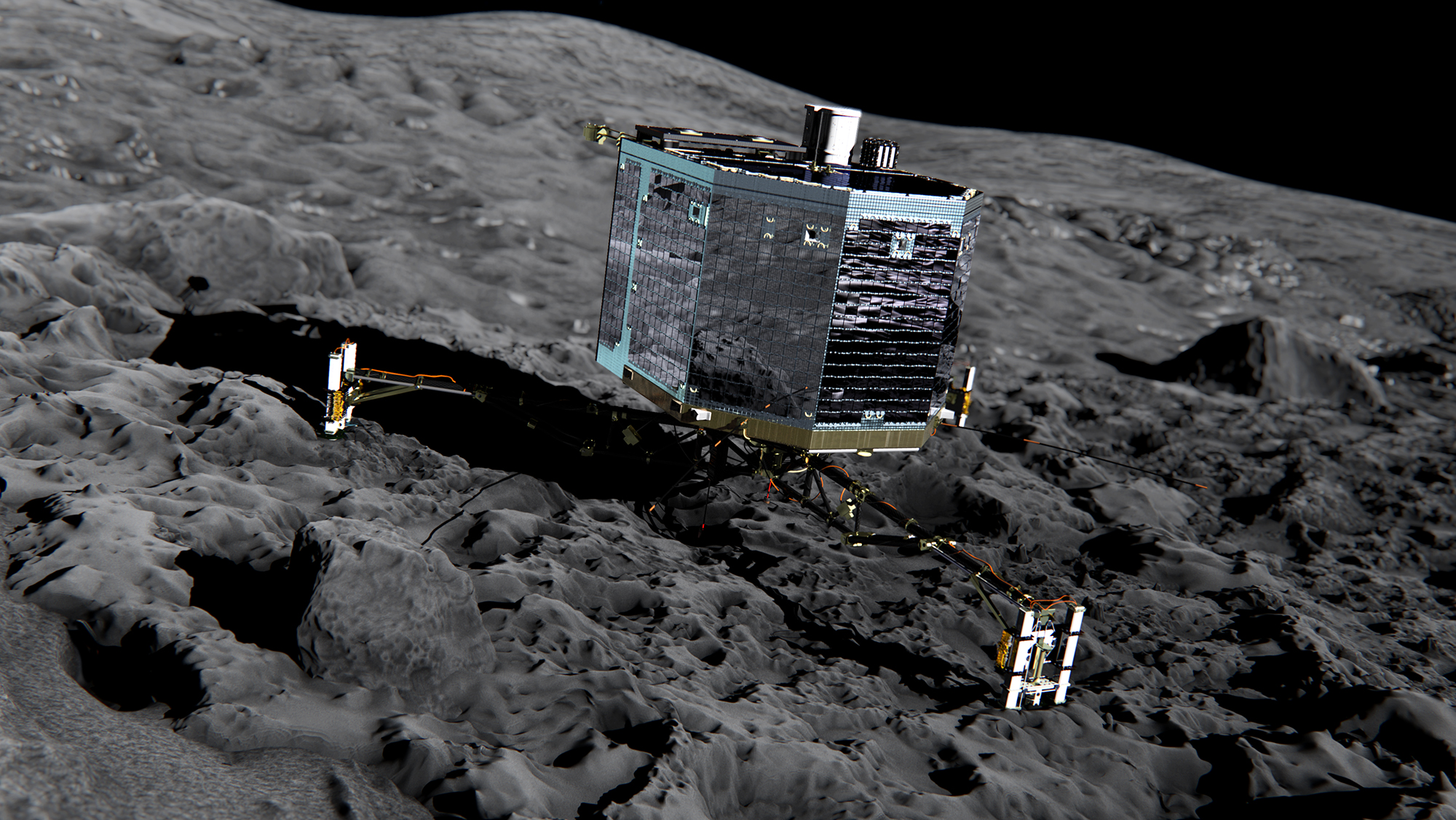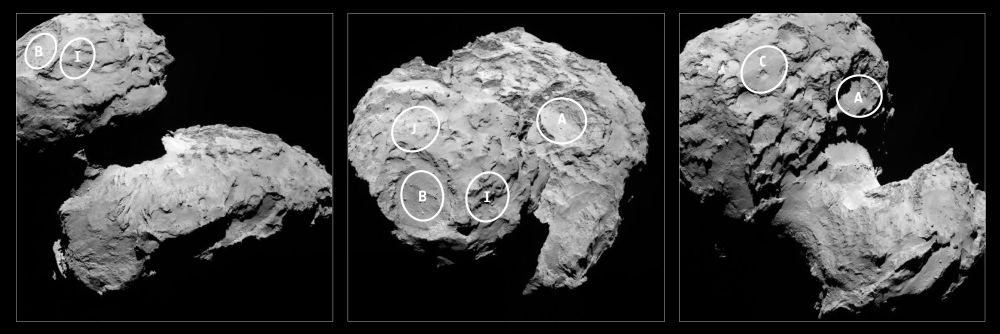
Just weeks after the European Space Agency’s (ESA) Rosetta spacecraft made history with its unprecedented rendezvous with Comet 67P/Churyumov-Gerasimenko, Rosetta’s team is hard at work determining possible landing sites for Philae, the spacecraft’s lander. ESA announced that it has narrowed down the search for landing sites to five locations. If all goes as planned, Philae will make history again, completing the first landing on a comet’s surface in November.
The hunt for a landing site was not possible up until the last few weeks, as Rosetta had not come close enough to image specific areas of Comet 67P/Churyumov-Gerasimenko. ESA described the search for a landing zone as a “complex process.” An ESA article stated: “For each possible zone, important questions must be asked: Will the lander be able to maintain regular communications with Rosetta? How common are surface hazards such as large boulders, deep crevasses or steep slopes? Is there sufficient illumination for scientific operations and enough sunlight to recharge the lander’s batteries beyond its initial 64-hour lifetime, while not so much as to cause overheating?”
This past weekend, the Landing Site Selection Group met at the Centre National d’Etudes Spatiales (CNES) in Toulouse, France, to discuss possible landing sites. The group was comprised of engineers and scientists from Philae’s Science, Operations and Navigation Centre at CNES, the Lander Control Centre at the German Aerospace Center (DLR), scientists representing the Philae Lander instruments, and ESA’s Rosetta team. According to ESA, they used data procured from Rosetta over the last few months and weeks, including high resolution images, surface temperature, pressure and density of the nucleus’ gas, rotation, mass, surface gravity, and orientation with respect to the Sun.

Stephan Ulamec, Philae Lander Manager at DLR, underscored the unique challenges of deploying a lander to a comet’s surface:
“This is the first time landing sites on a comet have been considered. Based on the particular shape and the global topography of Comet 67P/Churyumov-Gerasimenko, it is probably no surprise that many locations had to be ruled out. The candidate sites that we want to follow up for further analysis are thought to be technically feasible on the basis of a preliminary analysis of flight dynamics and other key issues – for example they all provide at least six hours of daylight per comet rotation and offer some flat terrain. Of course, every site has the potential for unique scientific discoveries.”
The five landing sites were narrowed down from a pool of 10. According to ESA, three sites are located on the smaller of the comet’s two lobes (B, I, and J), while the other two sites are located on the larger lobe (A and C). An in-depth analysis of the benefits (and drawbacks) of all of the landing sites can be accessed via an ESA article.
The space agency announced that by Sept. 14 all sites will be fully assessed, leading up to the determination of the ultimate landing site. In addition, during this period Rosetta will move closer to the comet (within 20 to 30 kilometers), giving the team a better look at the sites and more pertinent data. At present time, the intended landing date is Nov. 11, but ESA announced the actual date and landing site will be announced Oct. 12, with a full assessment (“Go/No Go”) from ESA and the landing team to be announced Oct. 14.
The announcement of possible landing sites comes after a whirlwind year for the spacecraft. In January, Rosetta was famously “woken up” after a record 31-month-long hibernation period (Philae was woken up shortly afterward). Despite its long “sleep,” the spacecraft was found to be in excellent shape, with all of its science instruments intact. Over the last few months, as Rosetta has approached its cometary target, it has revealed many surprises, including an unexpected double-lobed shape, a distinct lack of ice, and “huge amounts of water outgassing,” as described in a previous AmericaSpace article. Rosetta (and Philae) will keep revealing discoveries until the end of its science mission in December 2015.
Having begun its journey aboard an Ariane 5 rocket in 2004, Rosetta has certainly come a long way (6.4 billion kilometers total, to be exact). In November, scientists, engineers, researchers, and space buffs alike will find out there is even more to discover as Philae, Rosetta’s “brother,” touches down on Comet 67P/Churyumov-Gerasimenko.
This DLR animation shows possible landing sites for Philae. This past weekend, five sites were selected from a pool of 10.
Want to keep up-to-date with all things space? Be sure to “Like” AmericaSpace on Facebook and follow us on Twitter: @AmericaSpace




Philae’s landing on the comet underscores the significant advances in planetary/comet/asteroid exploration. It is incredible to witness such technological precision that will reap tremendous scientific rewards. Can’t wait for the landing!